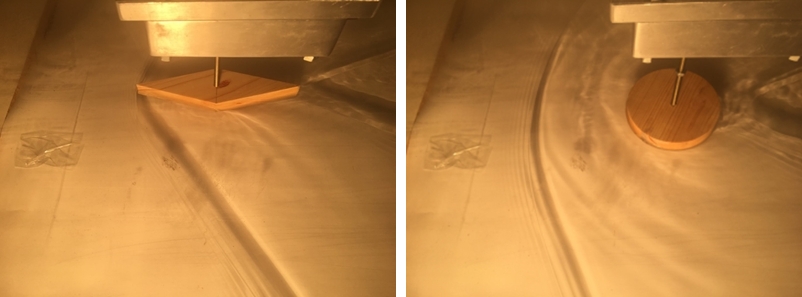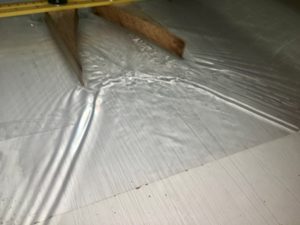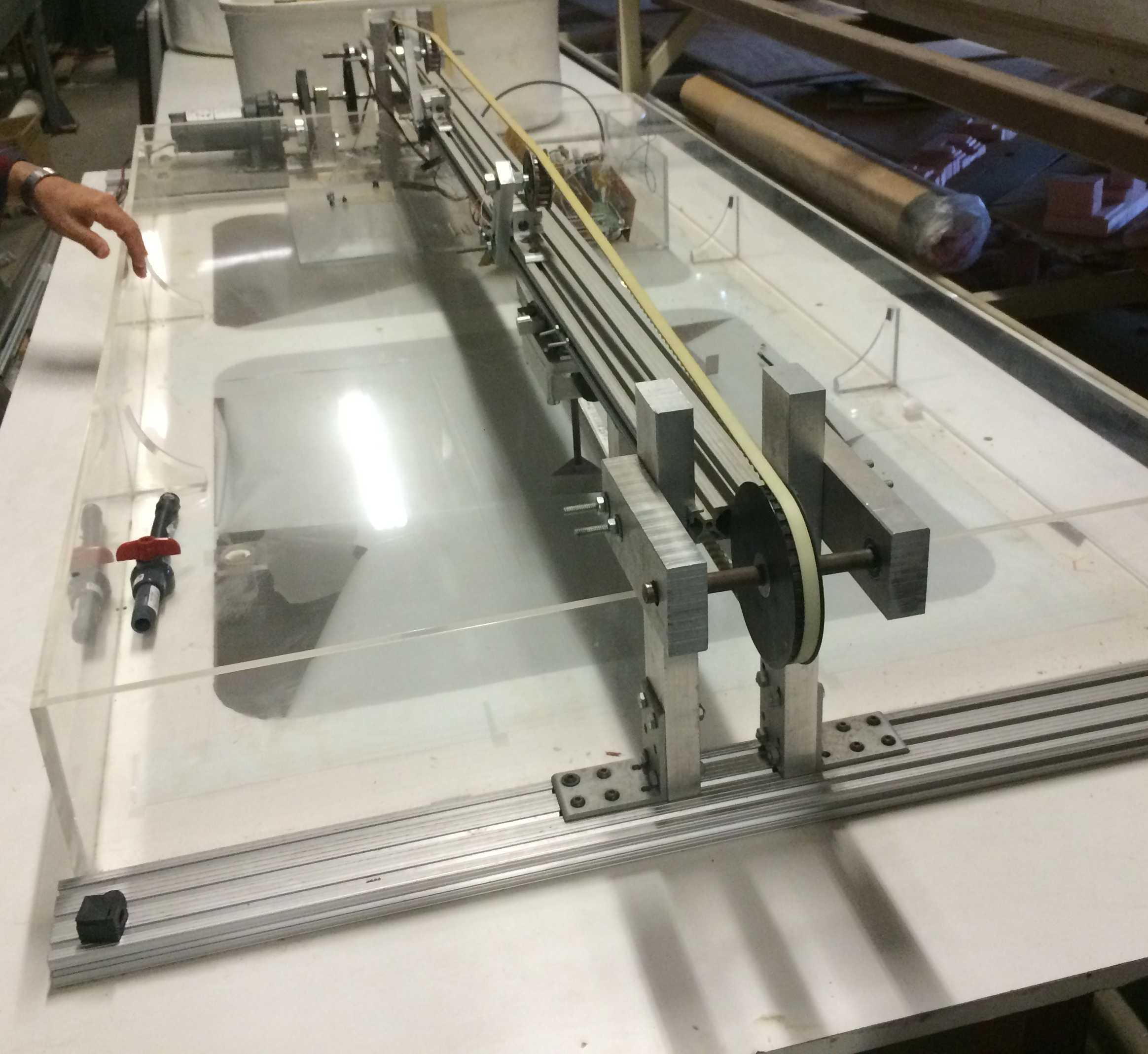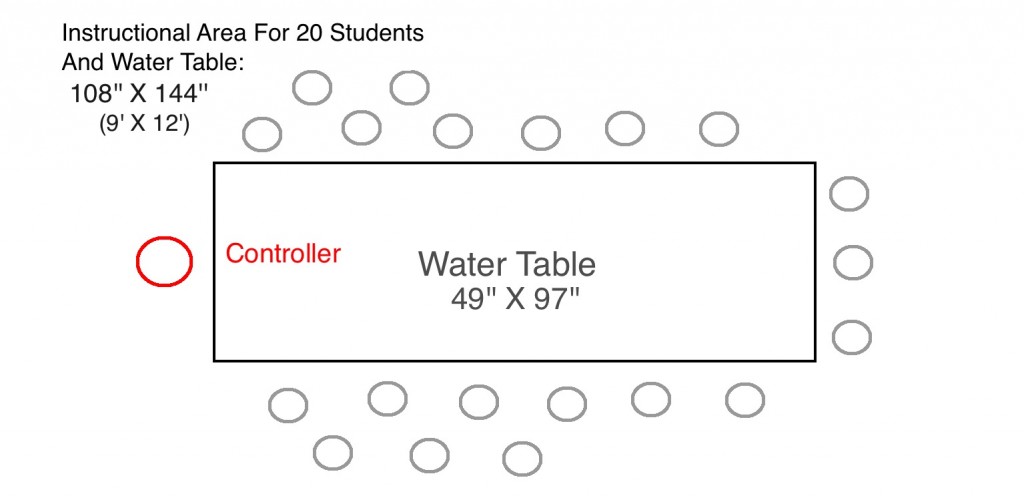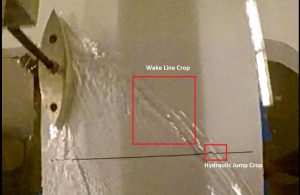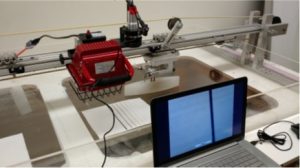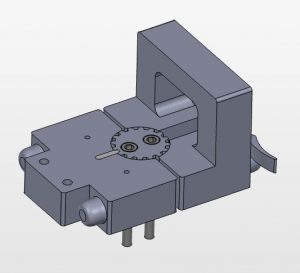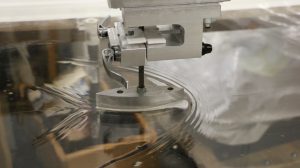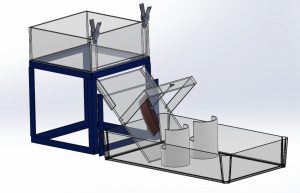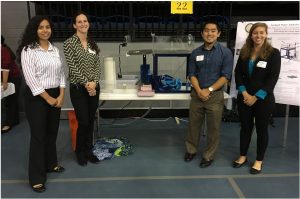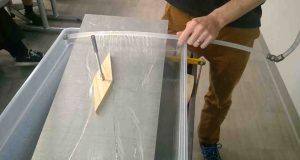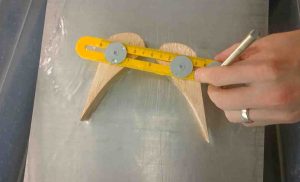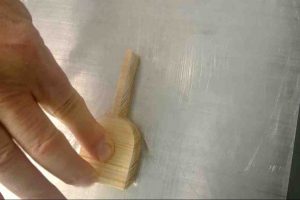The experiments demonstrating the high speed compressible flow field around the airfoil including possible shock waves are in general very expensive. In this study, a water table built by students with very little cost will be used. The water table can simulate the physics of gas flow, but much cheaper than a wind tunnel.
The idea behind the water table is based on the hydraulic analogy. To explain the theory, consider a thin layer of water on a flat plate.
The surface wave can be related to two-dimensional compressible fluid flow under the isentropic condition. As discussed for “Design and Computational Analysis”, the governing equations representing conservation laws of mass, momentum and energy together with boundary conditions determine the pressure, the density and the velocity components of the fluid particles. On the other hand, the governing equations for the thin water layer (of incompressible fluid flow) are the conservation of mass and momentum while the pressure is related to the height of the water column via the hydrostatic equation. The analogy between the two formulations yields the following. The height of the water column in the water table is related to the density of a two dimensional compressible flow over a similar geometry.
It can be shown that the temperature is also proportional to the height of the water column if the ratio of specific heats is equal to 2 (for air this ratio is 1.4). Furthermore, the pressure is proportional to the square of the height of the water column. These relations can be used under the conditions mentioned to present the compressible flow field including shock waves, in terms of the height of the surface water in the water table. The analogy is valid qualitatively and quantitatively.
Left: Diamond-shape airfoil with attached shock; right: cylinder with detached bow shock
Nozzle with shock at the nozzle exit
The experimental equipment is explained in the following.
Generation 1 Water Table: Water table with moving model
A model is attached to a rail and pulled through a thin layer of water. The model speed can be adjusted to speeds up to 3 m/s. The original water table components and bill of materials can be downloaded here: Water table_CAD drawings and BOM
All additional reports are provided upon request.
The existing table is improved by three different modules: water height measurement, quick release for parts, and advanced movement control. 
Water table update modules
Diagram for the instructional square footage needed for the Water Table and 20 students
Module 1: Measurement of wave height and angle by image processing of fringe line distortion
Module 2: Quick-release mount (able to index the airfoils under certain angles)
Generation 2 Water Table: Inclined water table
The inclined water table allows to have a stationary model. The water height and velocity are controlled by the water height in the tank, gate height, and ramp inclination angle. Another variant uses a pump to continuously circulate the water. The pump flow rate has to be considered.
Next generation Inclined water table with pump
Simple, inclined water table with sheet metal and hose
Learning goals for experimental validation:
• The students will learn how their designed and manufactured model behaves in a real-time experimental setting.
• The students will understand how potential deviations between theory and practice can be explained by simplifications in the design process, imprecision on the manufacturing process or simplifications in the validation process.
• The students will experience a complete aerospace engineering project similar to industrial, real world challenges to engineers.
References:
[1] M. Hafez, F. Jan, B. Linke, I. Garretson, Hydraulic analogy and visualisation of two-dimensional compressible fluid flows: part 2: water table experiments, Int. J. of Aerodynamics, 2018 Vol.6, No.1, pp.67 – 82, DOI: 10.1504/IJAD.2018.089775
[2] Hafez, A. Chuen and A. Burkhead (2018). Simulations of Shallow Water Surface Waves and Comparison with Water Table Experiments, Tenth International Conference on Computational Fluid Dynamics (ICCFD10), Barcelona, Spain, July 9-13, 2018
[3] Hafez, A. Chuen, A. Burkhead (2018). Simulations of shallow water surface waves and comparison with water table experiments, International Journal of Aerodynamics ( in press)
[4] Ian C. Garretson, François M. Torner, Jörg Seewig, Barbara S. Linke. An Algorithm for Measuring the Hydraulic Jump Height of an Airfoil in a Water Table (in preparation)
